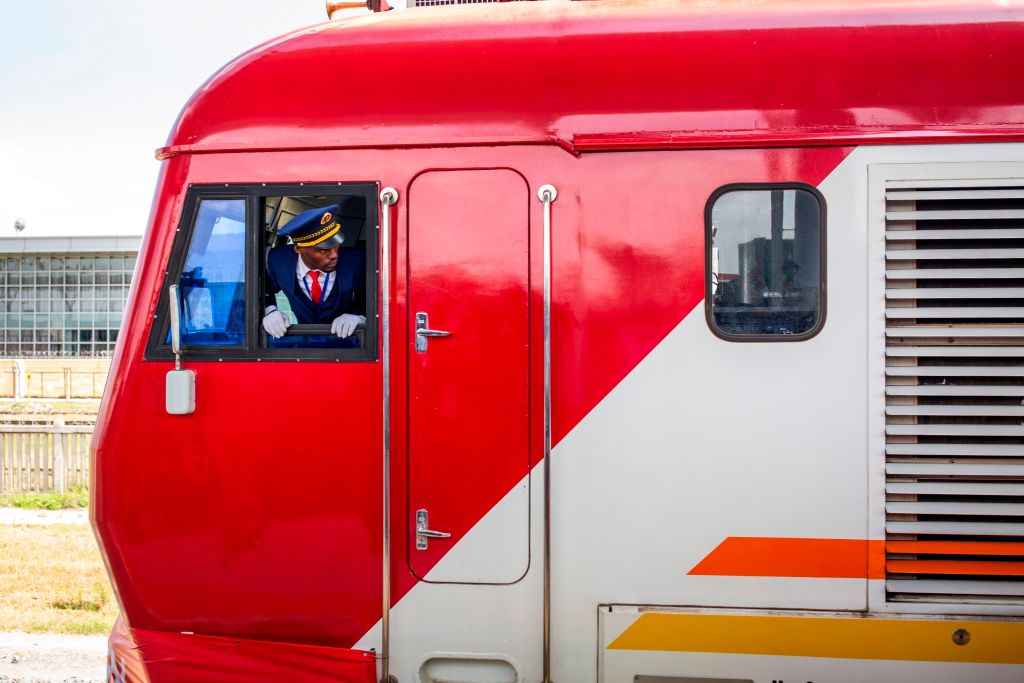ADF STAFF
Kenyan President William Ruto’s recent decision to reveal key parts of a major Chinese loan reveals the lopsided terms African nations often face when borrowing from China. In some cases, these loans can put their own economies at risk as they struggle with high levels of debt.
Ruto lifted the lid on Kenya’s initial $2 billion loan from the Export-Import Bank of China that financed the construction by a Chinese company of the Standard Gauge Railway (SGR) between the port of Mombasa and Nairobi.
The entire railway, including a link with neighboring Uganda, costs $4.7 billion. Construction beyond Nairobi stopped after Kenya struggled to keep up its payments.
The contract was signed in 2014 by then-President Uhuru Kenyatta. Kenyatta pledged to release the loan details in 2019, but later said the contract’s confidentiality clauses made that impossible.
In 2020, in response to a lawsuit by civil-society advocates, a Court of Appeals ruling determined that the entire $3.6 billion undertaking — Kenya’s largest-ever infrastructure project — was illegal because authorities did not consider competing bids.
Ruto’s action is a significant step toward transparency, according to Cobus van Staden, managing editor of the China Global South Project.
Over the past two decades, China has loaned nearly $150 billion to African nations, primarily in the form of commercial loans shrouded in secrecy. Kenya ranks among China’s top African borrowers.
“Half of Chinese loans in sub-Saharan Africa are missing from sovereign debt records,” researcher Kathleen Brown wrote in an analysis of the China-Africa debt system.
The loans are typically made to or on behalf of state-owned enterprises, such as the Kenya Railways Corp., with the national treasury as the ultimate guarantor.
The SGR opened with fireworks in 2017 and has failed to pay for itself since.
The Chinese-funded study that underpinned the SGR claimed the railway would turn a profit by moving 22 million tons of freight a year, or 20 trains every day — more than double its operating capacity, according to a study by the Kenya Institute for Public Policy Research and Analysis.
Kenyatta ordered all cargo from Mombasa to be shipped via the SGR in an effort to make the railway profitable. That move backfired, leading to court challenges, unemployment and protests among trucking companies. Ruto dropped the order when he became president.
Ruto’s decision to reveal the SGR contract was unusual, but it need not be that way, according to Brown. A small number of loans have also been revealed to international lenders despite China’s demand for secrecy.
Keeping Chinese loans off their books can help African nations look financially favorable when it comes to borrowing from international institutions such as the World Bank, which impose restrictions on low- and middle-income countries as their debt loads increase, Brown added.
“While governments may benefit from hiding debt in the short term,” Brown wrote, “hiding debt could be disastrous in the long term as hidden burdens become unsustainable.”
Secret loans can lead to what World Bank analyst Sebastian Horn calls “hidden defaults” as countries fail to keep up payments, forcing them to renegotiate with Chinese lenders who generally refuse to provide relief by reducing the loan amount. Instead, the loans are often stretched out over more time, putting countries deeper in debt in the long run.
By revealing the terms of Kenya’s SGR debt, Ruto shined a light on the conditions his country and others face when they make deals with China. Among other things, the loan contract, which is marked “Confidential” on its first page, shows:
- Kenya paid an interest rate of 2%, much higher than most government-to-government lending.
- Kenya had to pay the Chinese lender a management fee of $15 million for the loan, along with a multimillion-dollar “commitment fee” each year based on the unused portion of the loan.
- Any disputes over the loan had to be resolved through arbitration in China.
- Kenya had to go to China first to purchase anything with money earned from the SGR before it could buy from other vendors.
“Despite it being negotiated as a government-to-government project where one expects a symbiotic relationship, all the risks were taken by the Kenyan taxpayer,” Kenyan economist Tony Watima told The New York Times newspaper. “Whether the project pays for itself or defaults, the financiers are guaranteed their return.”

